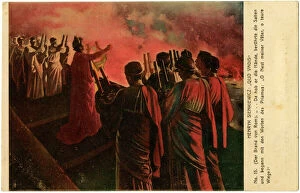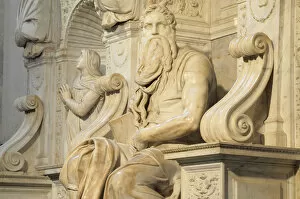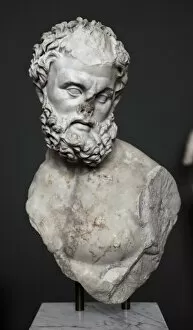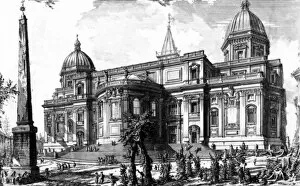Esquiline Collection
The Esquiline Hill, located in Rome, holds a rich history and is home to various captivating artworks and landmarks
For sale as Licensed Images
Choose your image, Select your licence and Download the media
The Esquiline Hill, located in Rome, holds a rich history and is home to various captivating artworks and landmarks. Emperor Nero's infamous act of playing his Lyre while watching Rome burn is a haunting image associated with this hill. The statue of the Esquiline Venus, crafted from exquisite marble, showcases the artistic brilliance that flourished on this hill. An engraving depicting Rome in 1890 offers a glimpse into the city's past, showcasing its architectural beauty and grandeur. The Santa Maria Maggiore Obelisk stands tall as an etching from 1833 captures its magnificence with brown wash accents. The Antinous of the Belvedere, discovered on the Esquiline Hill, is immortalized through engravings. This sculpture represents classical beauty at its finest. Within the Museo Nazionale d'Arte Orientale lies a Middle Eastern room that reflects Italy's connection to diverse cultures. It serves as a testament to how art transcends boundaries. San Pietro in Vincoli church houses Michelangelo's awe-inspiring statue Moses atop the Esquiline Hill. Its intricate details leave viewers mesmerized by its sheer craftsmanship. Roman Art reveals itself through various mediums like Carrara marble sculptures such as Heracles from the 4th century BCE - each piece telling stories of bravery and strength. Homers Odyssey comes alive through engravings found on this hill - transporting readers back to ancient times filled with mythical adventures and heroic deeds. Terme di Diocleziano presents us with remarkable statues like Boy on a Horse - capturing youthful energy frozen in time within Aula Decima. Sarcophagus details further showcase Roman artistry at its peak. Santa Prassede church enchants visitors with breathtaking mosaics dating back to the 9th century CE adorning its apse walls - offering glimpses into religious devotion during medieval times.









